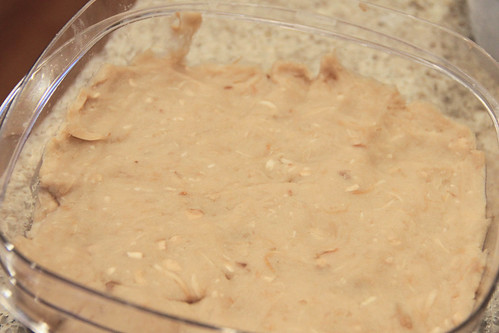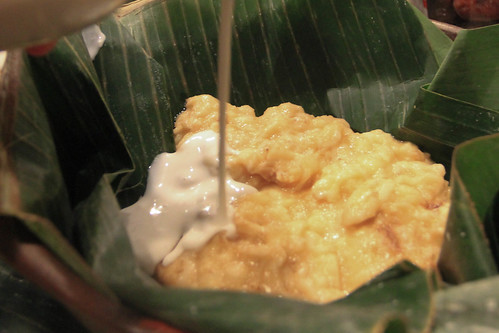Another beachside birthday party, another meal from a tiny, rich European country! The principality of Monaco is a Central Park–sized nugget on the French Riviera, whose Italian-sounding name is a giveaway of a linguistic, cultural, and culinary heritage that’s more closely connected to northern Italy than southern France.
For such a small place, there’s a surprisingly thorough culinary heritage, which is far better documented online than those of countries several orders of magnitude larger. Of course, it’s squarely within the Mediterranean flavor realm, though with its own twist.

Barbagiuan | Chard turnovers | Recipe

Nobody knows why these are called “Uncle John” in the Monégasque language, but these tasty, stuffed-dough, fried nuggets are the national dish. They’re stuffed with chard, which almost makes you think they’re healthy. Quite tasty, a great accompaniment to sparkling wine or rosé. Thanks to Ellen for prepping and folding the dough!
Oignons monégasques | Stewed baby onions | Recipe

This one was the crowd favorite. Small onions — you should probably use pearl onions but all I could find were little cipollini, which seemed to work too — are first sautéed, then gussied up with tomato paste, vinegar, and, intriguingly, raisins. A delicious sweet-and-sour appetizer.
Socca | Chickpea flatbread | Recipe
I’m figuring it’s a North African influence that brought chickpea flour to this corner of the world. With it,street vendors in the area whip up a sort of crêpe that’s eaten as a snack. Frankly, I found it pretty bland and thin, and I clearly did something wrong because I then had it at a restaurant and it was thicker and fluffier and a whole lot better. Also, I left the big heavy round skillet I used to bake them at the rental house, so it was frankly a doubly disappointing dish. (Maybe choose a different recipe to avoid my fate, but even that won't help you keep track of your cookware.)
Fougasse | Focaccia bread | Recipe

The fougasse for which Monaco is known is actually a dessert covered with sprinkles and studded with various dried fruits and spices like fennel. I didn't make that. Instead, I made this lovely herb-y bread, which all went very quickly toward sopping up the onion sauce.
Stocafi | Salt cod stew | Recipe (scroll to "Le Stockfish")

I saw a few different variations on the name, but all are local adaptations of the English work stockfish, which itself is a misinterpretation of the Scandinavian term for white fish dried on a stick. It’s not even true stockfish that’s used, but rather bacalao, or salt cod. (Stockfish traditionally has no salt, it’s purely the passing wind that dries the fish-on-a-stick into eternal preservation.)
Anyway, stocafi is a seafood stew with a very Provençal assortment of ingredients: tomatoes, olives, potatoes, plenty of garlic, and a generous dose of olive oil. The dish was nice, though nothing special. We didn’t do the optional anchovy-garlic-basil puree at the end, perhaps we ought to have.
Pogne au fruits | Fruit cake | Recipe (scroll to "Le pogne au fruits")

Laura wanted cherries, so cherries she got. This is a fairly simple dessert, just fruits pressed into a fairly rich flat yeasted dough. And tasty!



























